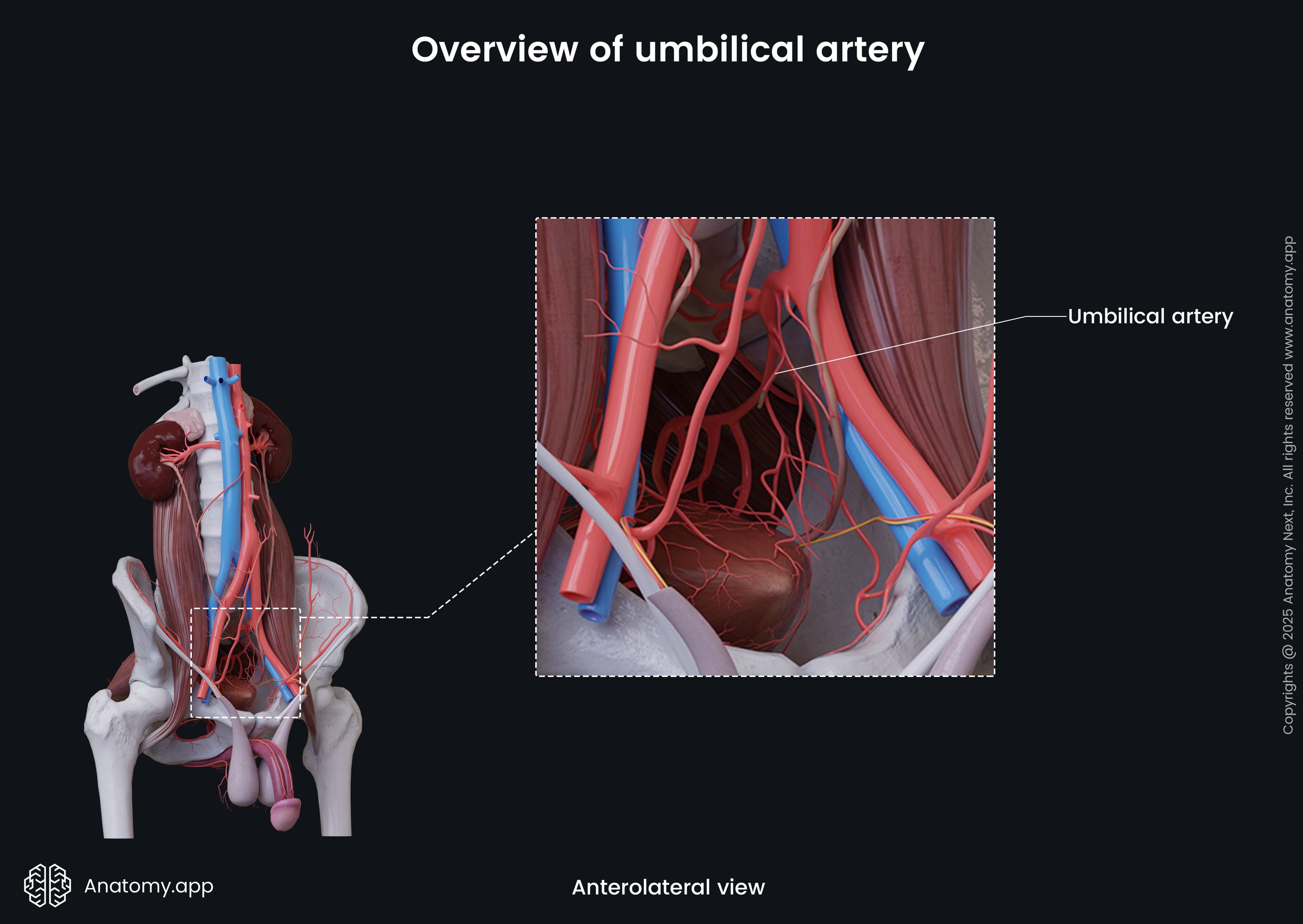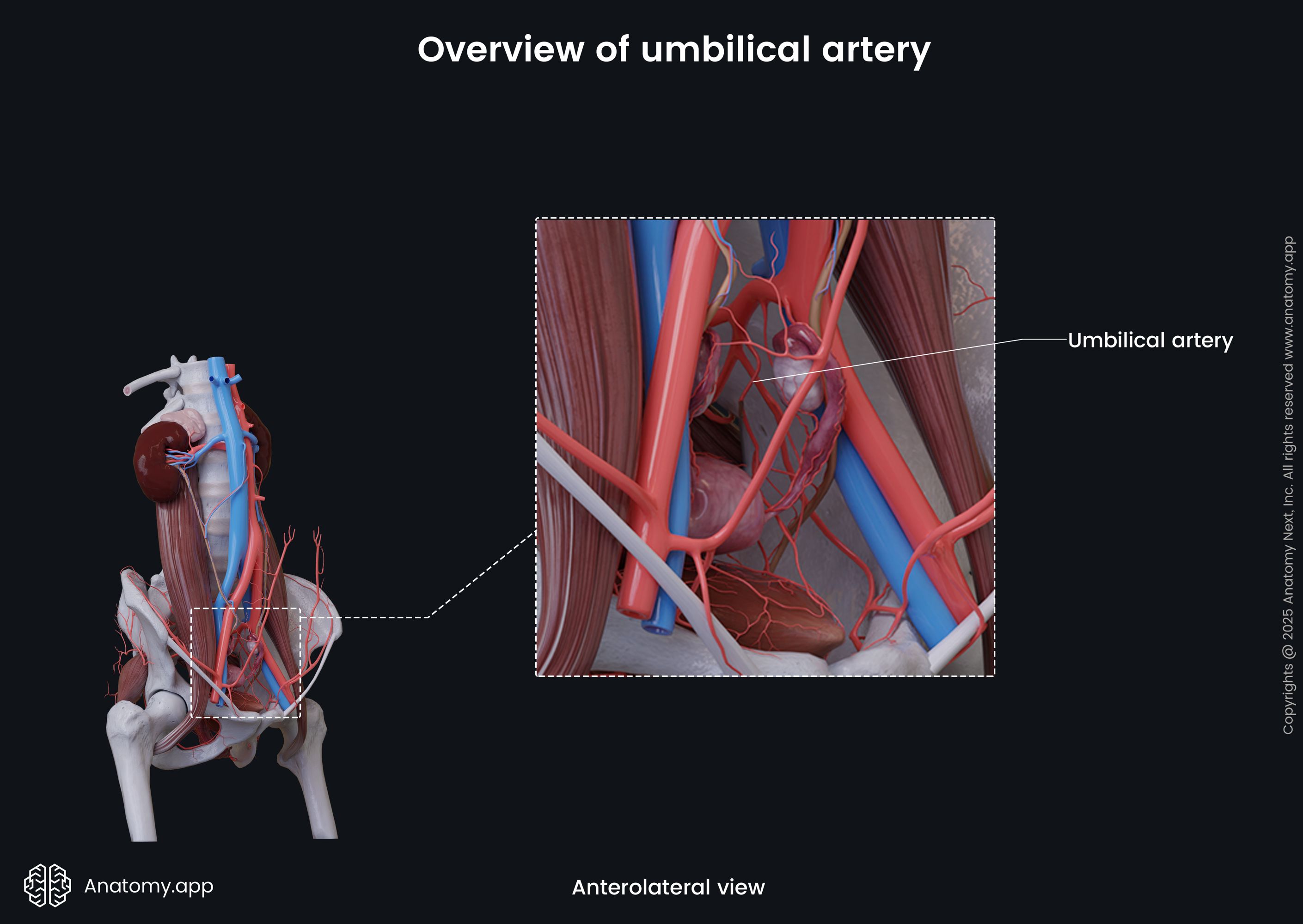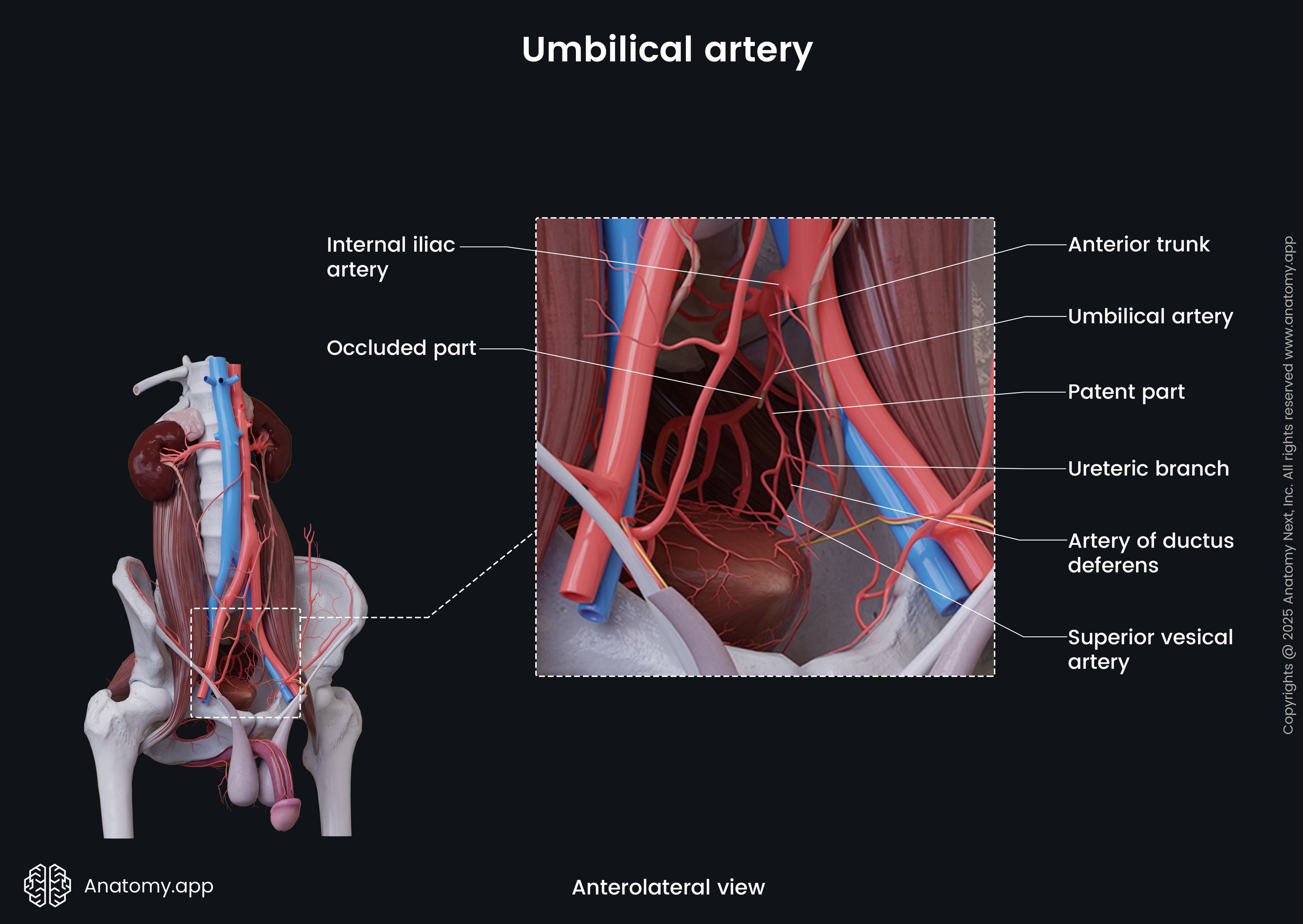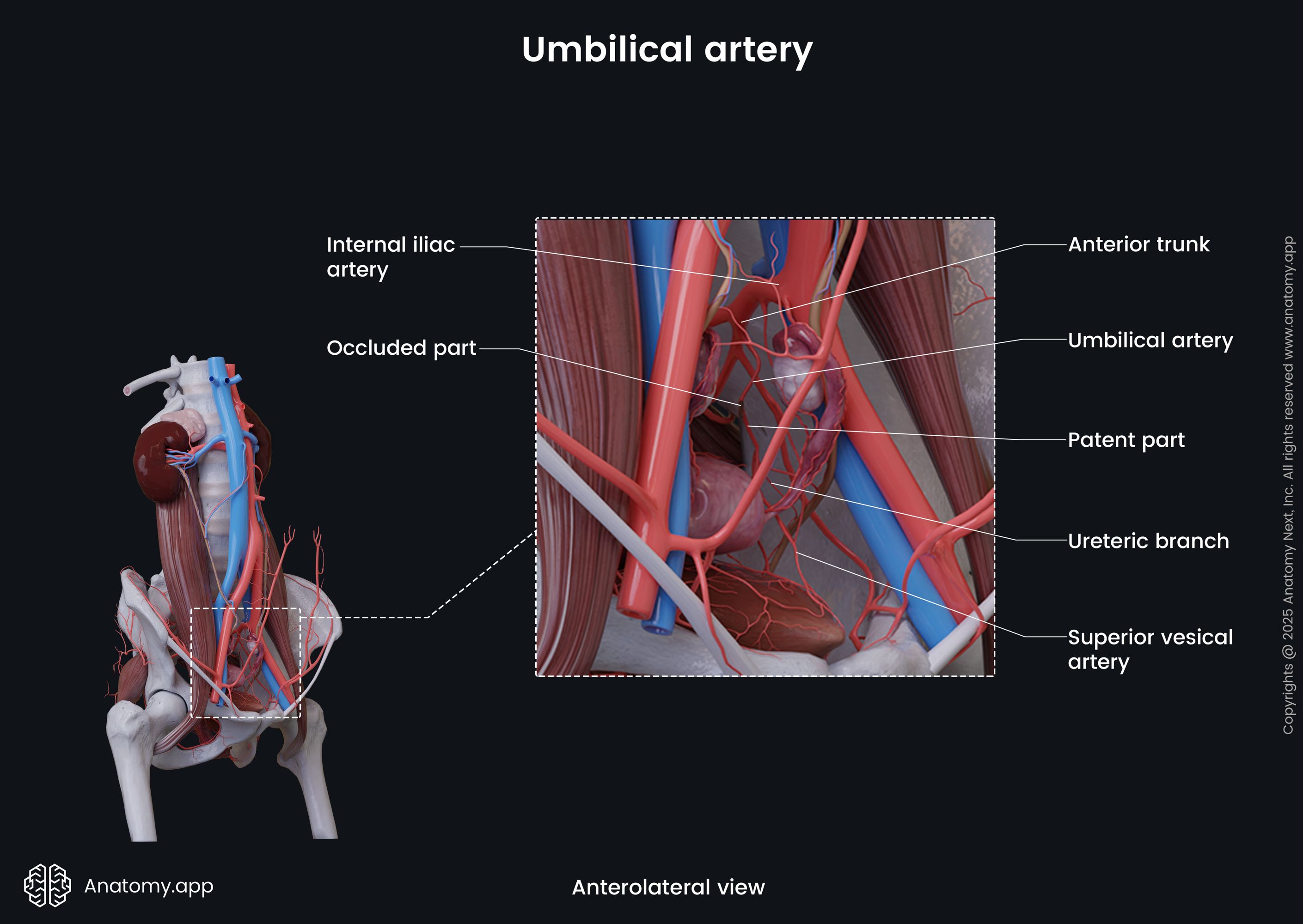- Anatomical terminology
- Skeletal system
- Joints
- Muscles
- Heart
- Blood vessels
- Blood vessels of systemic circulation
- Aorta
- Blood vessels of head and neck
- Blood vessels of upper limb
- Blood vessels of thorax
- Blood vessels of abdomen
- Blood vessels of pelvis and lower limb
- Arteries of pelvis and lower limb
- Veins of pelvis and lower limb
- Blood vessels of systemic circulation
- Lymphatic system
- Nervous system
- Respiratory system
- Digestive system
- Urinary system
- Female reproductive system
- Male reproductive system
- Endocrine glands
- Eye
- Ear
Umbilical artery
The umbilical artery (Latin: arteria umbilicalis) is a paired branch of the anterior trunk of the internal iliac artery that functions only in the time of the placental blood circulation. The umbilical arteries supply deoxygenated blood from the fetus to the placenta. It gives rise to the superior vesical arteries that supply the urinary bladder after birth.


The umbilical artery passes along the anterior abdominal wall to the umbilical ring. Further, it passes within the umbilical cord to the placenta. After birth the umbilical artery obliterates and its distal part becomes the medial umbilical ligament, but the proximal part of the umbilical artery gives rise to the mentioned superior vesical arteries.

